Hakan Rehnberg
ARTIST
Håkan Rehnberg (Göttenborg, b. 1953)
Painting, Sculpture
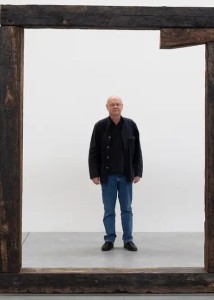
April 2022
Painting as Event, a CONVERSATION
WITH Håkan Rehnberg
BY REGINA DE CON COSSÍO
Photographs Courtesy of Galerie Nordenhake
How to conceive painting beyond figures and colors? In this exclusive conversation with Swedish artist, Håkan Rehnberg (1953) structure, composition and form fade away to create a more radical & existential experience of aesthetics, sharing with us his idea on how art can challenge the gaze of the beholders, as well as the importance of his artistic process. Underneath the brushstroke stands a decision. The gesture that marks there is no turning back.His starts in the world painting in the 70s were driven for his interest in an expressionist and organic composition. His work today is an example of the possibilities of contemporary painting.
Regina De Con Cossio: In some interviews you have mentioned that your paintings are the product of a single work session. In that sense some critics relate your artistic practice with concepts such as materiality and transparency, opacity and legibility. However, I think we should also talk about time. How do you define time as part of your artistic interests?
Håkan Rehnberg: I am obsessed with the process that when you start to make a painting you can in some way never leave it. You are stuck to it: like faith or an event that has happened that you can’t undo. So, each painting is like an oracular message. In Greek tragedy, the person never understands the oracular message until it occurs as death. That is also an act of love because if you are obsessed with an artwork and like it and love it, then it is a lifetime issue.
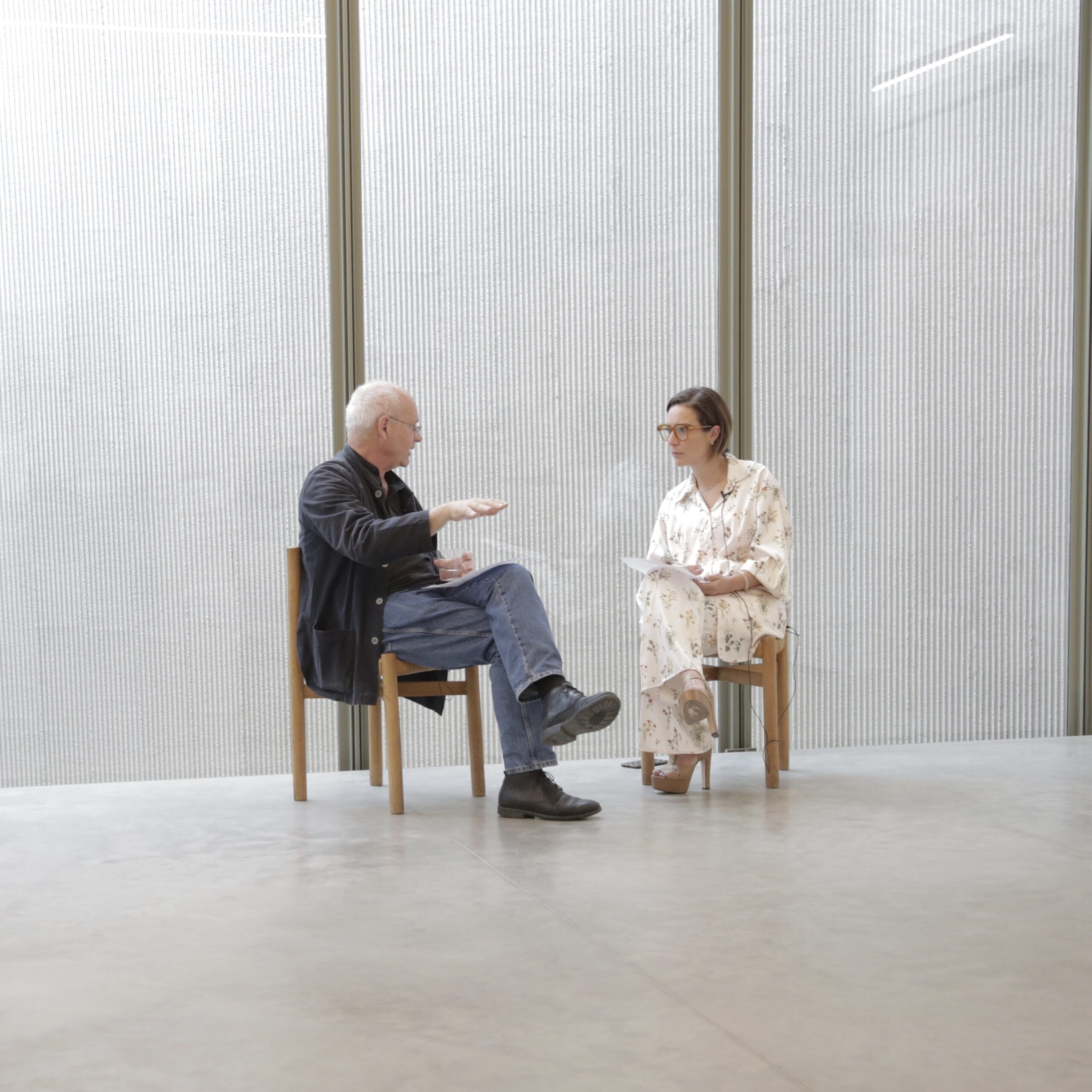
In the middle of the 70´s, we visited the widow of Barnett Newman and we were in his apartment where his original “Ornament” hanged. That artwork is the moment when Newman found out what a painting is. Before, he made metaphors and figures of lightings, but that piece is not anymore a metaphor or a symbol, it was making a painting like an event. That’s an important moment in my understanding of what an artwork can be.
Something is happening when I paint. Something is happening towards me. I am taking some types of risks. The act of painting is like materialising an instant. When that instant becomes a painting it transforms it to what I would call the “meander” time. When time slows down and goes back to itself. Similar to when a river comes to the flatland and it starts to meander, It slows down. Time becomes closer, but also a place of attention. A lot of things happen with time when you make a painting. You stay with it all along.
I don´t leave it. Kafka in his latest moments and Mircea Cărtărescu have talked about that. They want to write pieces without interruption, made in one single moment.
RDCC: Few people know that poetry is close to your heart and the impact of the Greeks in your work. How did that start?
HR: I think it started while reading poetry. I read quite a lot of Paul Celan.It was in the late 80’s when a friend of mine who was living in Berlin and I decided to translate Celan into Swedish. Now, he has published all of Paul Celan’s late authorship, and we have ever since cooperated quite a lot. The reading of Paul Celan’s poetry has meant quite a lot for me. We still have a small group of poets and gather sometimes to talk about it.
Hölderlin and the reading of the Greeks have also interested me. Together with other colleagues, we made the translation of Heraclitus into Swedish. I like that, because very few people in the art world know that I have done that, since I have tried to keep those intellectual interests separated from my artistic work. When you look at my artworks you do not need to be loaded with a lot of philosophy or poetry, it is enough to look at them. My works are very physical as they come from the hands literally. Before I work, in some way I invoke my house gods, but I think they are freestanding. I am very sceptical about hermeneutical methods to understand a work of art.
RDCC: In a conversation you had with Daniel Bairnbaum you mentioned that the works where you fuse objects with paintings were inspired by works by Brice Marden, Robert Ryman and Donald Judd. In that conversation you say that, although that impulse came from America, your works had a totally Central European eye. How can you describe that eye?
HR: And Barnet Newman! …. I have been influenced by them, but I always want to do something different from what they have done. I think that American artists are professionals. In some way, the handicraft for what they are doing is very important. But in European art the handicraft is not so strong, they rest on a more complicated cultural, religious, and philosophical and existential tradition of belonging and not belonging.
I am more in the existential side than in the professional one. I worked and I was quite close friends with an American artist, a minimalist sculptor, whose name is Richard Nonas. He just passed away, and he was quite American in his way of wanting to dominate. I am quite distant from that attitude; I don’t even see my technique as being professional in the way that I can dominate. John Cage for instance talks about deskilling, like “not to being able to making” but “not being able to make”. Those kinds of paradoxes are quite relevant to me.
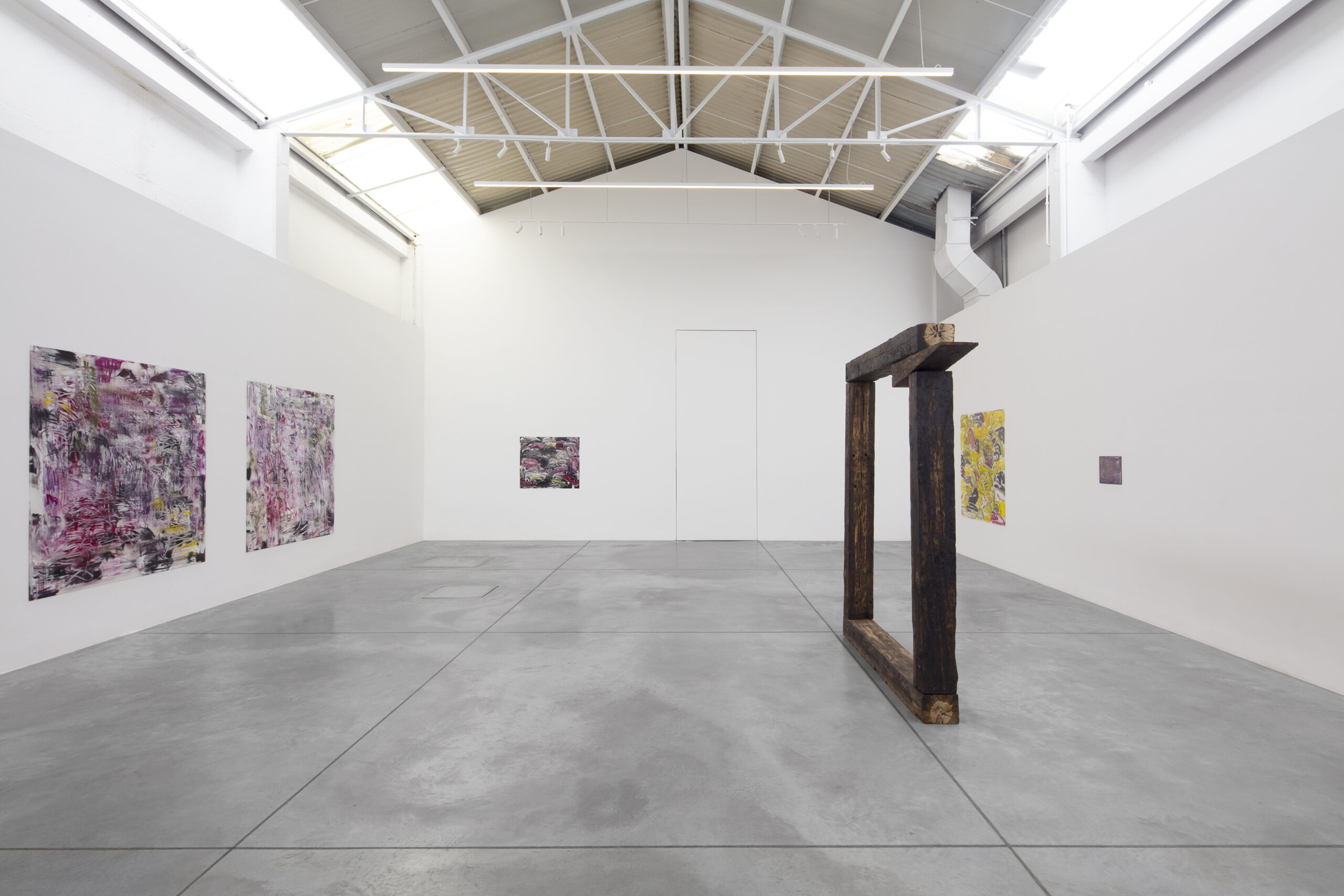
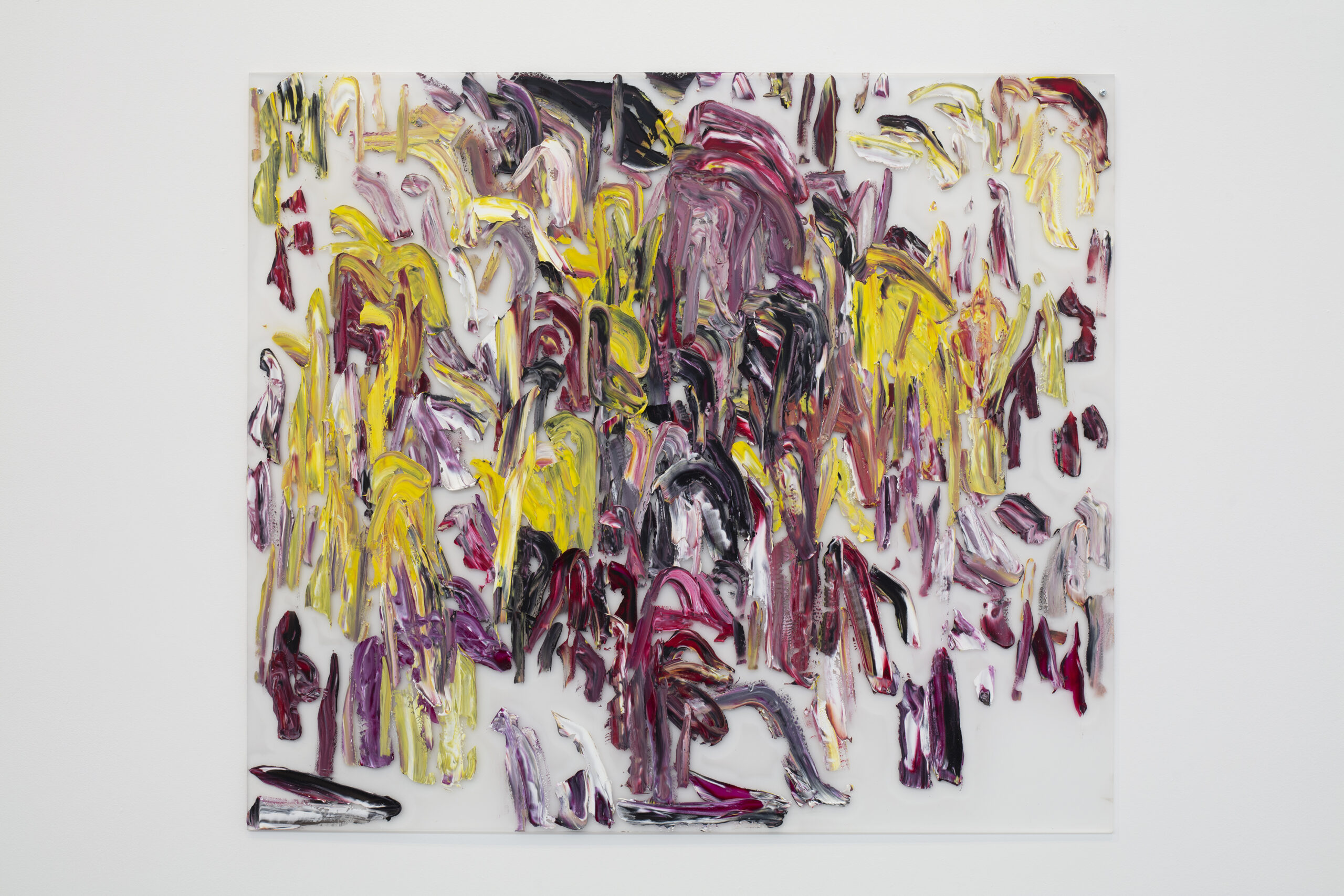
RDCC: In the same conversation you say that, “the work of art stands for an action of resistance, no understanding, no usefulness, but a sense of wonder and a vertiginous questioning”. And that “art is not something you learn, own, or even practice, but the compulsion in every situation to seek the point where you fall off the stage”. How do these sensations translate into your artistic processes? What are the actions of your daily life that you can identify in your artwork?
HR: Fall of the Stage, yes! There was an exhibition that was called the “Double Scene” (presented by Moderna Musset in 2015) . The title was a little bit of a reference to Hamlet, where inside the tragedy you act a comedy. In my studio, I have a small little shelf, around 40cm high. I used to say that when I paint I have my foot on that shelf and that is like a parallel world, the art world. It’s like a theatrical scene. I have the other foot in reality.
That is also related to my idea of sculpture as frontal sculpture. Leaning backwards and taking a small step forward. That deviation from the flatness is also how my paintings are made: they are breaking the rules of flatness and have that original sculptural approach.
That is the physicality of the paintings.The materiality is not the same as in a hammer or a tool, it is more like a philosophical materiality. If you are familiar with the platonic concept of “chóra” that is close to my understanding of it. I have written a text about that once upon a time. I related it to a painting and the ambivalence of that materia. While a painting is an object that comes towards you, it also creates something that you can´t really grip.
That has been quite essential for me all the time.
This is related also to what we spoke before about time. In Plato’s Parmenides, he speaks about the instant, as something that can’t be put into concepts. It defies language. You must approach it from different angles. When you approach a certain language you fall off the stage.
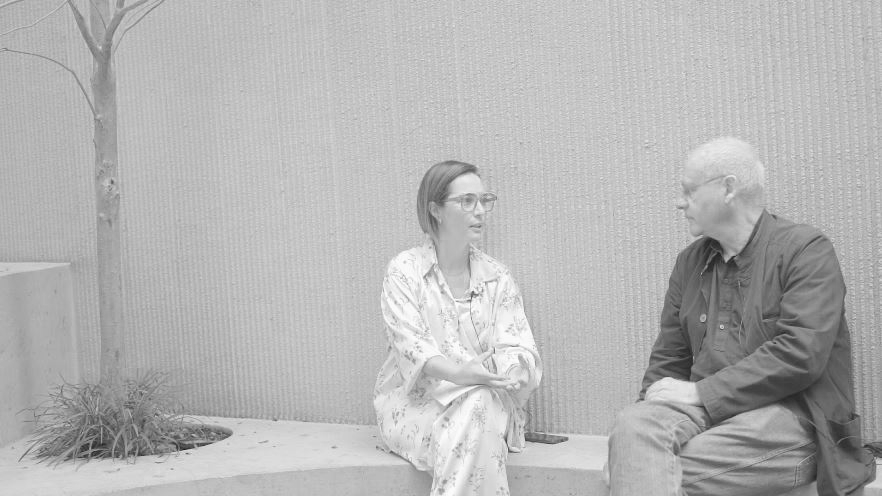
RDCC: Do you think there are artistic visions that come from territories or historical moments? What motivates these visions?
HR: I have tried to be distant towards the attitude of using a language for aesthetics. For instance, I listen to quite a lot of music and one of the musicians that I like is Helmut Lachenmann; one of the most important contemporary composers, who was a pupil of Luigi Nono. He never wanted to use his formal language. He had to approach it in a new way constantly to start from a new beginning all the time.
Of course, you can recognize certain ways of doing that if you are familiar with his work, but the main attitude is to not to experience a new free language or something like that. You always have to start from a beginning, this is quite important because it is so common that the critics say things like “he has found his formal artistic language and his style” and for me, I never want to do that, to be an artist that has founded his language. I use the word Gegenwort from Paul Celan (En. Antonymous), it means “a word that goes against the word”. He must experience this each time in a new poem and make it new in every single one. Each poem has a date and a special meeting. That is how the world won’t get into the ordinary language but as a witness of some sort of event.
Regarding painting as a community, I respect that quite a lot but I think it’s a problem when for instance you belong to a group and want to paint as they do, then you become representative of them and I think that becoming the archetypical is a problem.
When you become the representative of that historical moment, you transform into a symbol instead of an active member so you’re prescribing what that belonging means.
RDCC: In contemporary art there are artists who shy away from interviews and, on many occasions, do not wish to explain their works or “intellectualize” the processes of art. Others, on the contrary, have an articulated discourse: they not only describe their artistic processes, but can also connect art with other spheres. From my point of view, what the latter do is to connect art with oral language. It is not that they embellish paintings or any work of art with words but that they connect orality or writing with the visual. Does orality have any importance in your art in this sense?
HR: I like this question and underwritten the word orality because it has been a life problem to me. I used to stutter quite a lot when I was young and I had real problems to speak, that is why not doing it is quite important to me. I rarely talk about how it is to approach to a person and not being able to say what I want to say, what I do is that I approach and I am not able to say anything, I do approach the other person and that connection of that meeting is important. I don’t have a message to say, it is just an idea of sharing something with another person, a state of openness. The act of painting is connected to that type openness because I try to avoid all rules, although there are some I don’t understand. When I paint I am looking at what I am doing and it has to approach something that’s not familiar to me, it’s something strange and it’s like letting something strange approach you.
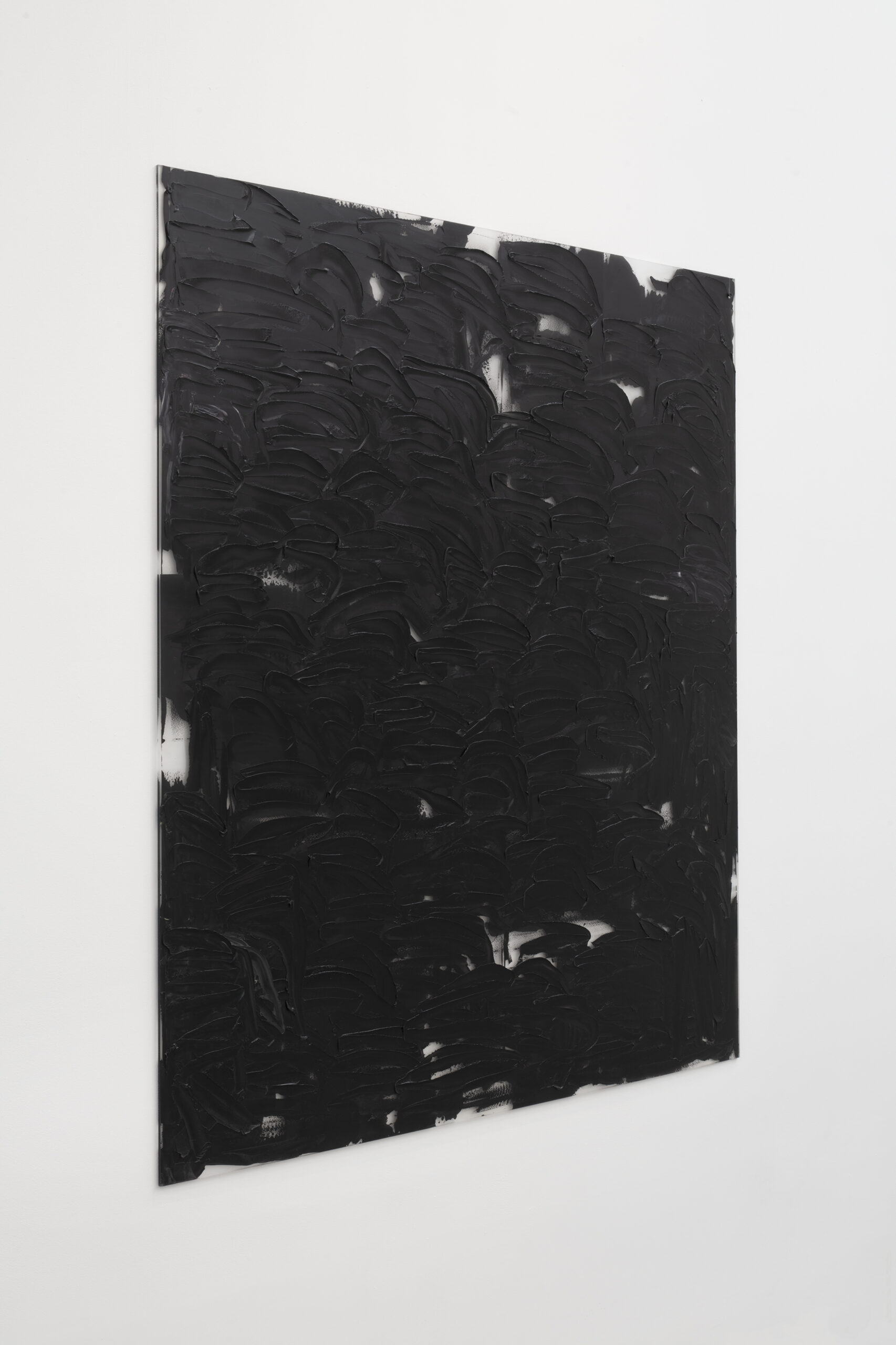
La Pintura como Evento, una CONVERSACIÓN
con Håkan Rehnberg
POR REGINA DE CON COSSÍO
Fotografías Cortesía de la Galería Nordenhake
Regina De Con Cossio: En algunas entrevistas has mencionado que tus pinturas son producto de una sola sesión de trabajo. En ese sentido algunos críticos relacionan su práctica artística con conceptos como materialidad y transparencia, opacidad y legibilidad. Sin embargo, creo que también deberíamos hablar del tiempo. ¿Cómo defines el tiempo como parte de tus intereses artísticos?
Håkan Rehnberg: Estoy tan obsesionado con el proceso que cuando comienzas a hacer una pintura, de alguna manera nunca puedes dejarla. Estás apegado a eso: es como la fe o un evento que ha sucedido y que no puedes deshacer. Entonces, cada cuadro es como un mensaje oracular. En la tragedia griega, la persona nunca comprende el mensaje oracular hasta que se produce como muerte. Eso también es un acto de amor porque si estás obsesionado con una obra de arte y te gusta y la amas, se convierte en un asunto de por vida.
A mediados de los años 70 visitamos a la viuda de Barnett Newman y estuvimos en su apartamento donde colgaba su “Ornament” original. Esa obra de arte es el momento en que Newman descubrió lo que es una pintura. Antes hacía metáforas y figuras de luces, pero esa pieza ya no es una metáfora ni un símbolo, sino hacer una pintura como un acontecimiento. Ese es un momento importante en mi comprensión de lo que puede ser una obra de arte.
Además, algo está pasando cuando pinto. Algo está pasando hacia mí. Estoy tomando algunos tipos de riesgos. El acto de pintar es como materializar un instante. Cuando ese instante se convierte en pintura lo transforma en lo que yo llamaría el tiempo “meandro”. Cuando el tiempo se ralentiza y vuelve a sí mismo. Similar a cuando un río llega a tierra firme y comienza a serpentear, se ralentiza. El tiempo se vuelve más cercano, pero también un lugar de atención. Muchas cosas suceden con el tiempo cuando haces una pintura. Te quedas con eso permanentemente. No lo dejo. De eso habló Kafka en sus últimos momentos y también Mircea Cărtărescu. Querían escribir piezas sin interrupción, hechas en un solo momento.
RDCC: Pocas personas saben que la poesía está cerca de tu corazón y sobre el impacto de los griegos en tu obra. ¿Cómo empezó eso?
HR: Creo que empezó mientras leía poesía. Leí bastante a Paul Celan. Fue a finales de los 80 cuando un amigo que vivía en Berlín y yo decidimos traducir Celan al sueco. Ahora, él ha publicado toda la autoría tardía de Paul Celan, y desde entonces hemos cooperado bastante. La lectura de la poesía de Paul Celan ha significado mucho para mí. Todavía tenemos un pequeño grupo de poetas y nos reunimos a veces para hablar de ello.
Hölderlin y la lectura de los griegos también me han interesado. Junto con otros compañeros, hicimos la traducción de Heráclito al sueco. Eso me gusta, porque muy poca gente en el mundo del arte sabe que he hecho eso, ya que he tratado de mantener esos intereses intelectuales separados de mi trabajo artístico. Cuando miras mis obras de arte no necesitas estar cargado de mucha filosofía o poesía, basta con mirarlas. Mis obras son muy físicas ya que salen de las manos literalmente. Antes de trabajar, de alguna manera invoco a los dioses de mi casa, pero creo que son independientes. Soy muy escéptico con los métodos hermenéuticos para entender una obra de arte.
RDCC: En una conversación que tuviste con Daniel Bairnbaum mencionaste que las obras donde fusionas objetos con pinturas estaban inspiradas en obras de Brice Marden, Robert Ryman y Donald Judd. En esa conversación dices que, aunque ese impulso vino de América, tus obras tenían un ojo totalmente centroeuropeo. ¿Cómo puedes describir ese ojo?
HR: ¡Y Barnet Newman! …. He sido influenciado por ellos, pero siempre he querido hacer algo diferente a lo que ellos han hecho. Creo que los artistas estadounidenses son profesionales. De alguna manera, la destreza manual de lo que están haciendo es muy importante. Pero en el arte europeo la manualidad no es tan fuerte, descansan en una tradición cultural, religiosa, filosófica y existencial más complicada que tiene que ver con la idea de pertenecer y no pertenecer.
Yo me posiciono más en el lado existencial que en el profesional. Trabajé y fui muy amigo de un artista estadounidense, un escultor minimalista, cuyo nombre es Richard Nonas. Acaba de fallecer, y era bastante “americano” en su forma de querer dominar. Estoy bastante alejado de esa actitud; ni siquiera veo mi técnica como profesional en la forma en que puedo dominar. John Cage, por ejemplo, habla de descualificación, que ha influido mucho en mi obra.
RDCC: En la misma conversación dices que “la obra de arte representa una acción de resistencia, no comprensión, no utilidad, sino una sensación de asombro y un cuestionamiento vertiginoso”. Y que “el arte no es algo que aprendes, posees o incluso prácticas, sino la compulsión en cada situación de buscar el punto en el que te caes del escenario”. ¿Cómo se traducen estas sensaciones en tus procesos artísticos? ¿Cuáles son las acciones de tu vida diaria que puedes identificar en tu obra de arte?
HR: Caída del escenario, ¡sí! Hubo una exposición que se llamó “Double Scene” (“Escena Doble”, presentada por Moderna Musset en 2015. El título era un poco una referencia a Hamlet, donde dentro de la tragedia actúas una comedia. En mi estudio tengo un pequeño pedestal, tipo escalón de unos 40 cm de altura. Yo solía decir que cuando pinto tengo el pie en ese pedestal -como si fuese estar en un escenario-. Estar ahí dentro es como habitar un mundo paralelo: el del arte; como si representara una escena teatral. El otro pie lo tengo sobre el piso en la realidad.
Eso también está relacionado con mi idea de la escultura como escultura frontal. Inclinarse hacia atrás y dar un pequeño paso hacia adelante. Esa desviación de la superficie plana es también como se hacen mis pinturas: están rompiendo las reglas pictóricas de la superficie plana y tienen más bien un un enfoque escultórico original que se manifiesta en el relieve.
Esa es la fisicalidad de mis pinturas. Sin embargo, la materialidad no es la misma que en un martillo o una herramienta, es más como una materialidad filosófica. Si estás familiarizada con el concepto platónico de “chóra”, eso se acerca a mi comprensión. Escribí un texto sobre eso una vez. Lo relacioné con la pintura y la ambivalencia de esa materia. Si bien una pintura es un objeto que viene hacia ti, también crea algo que realmente no puedes agarrar. Eso ha sido bastante esencial para mí todo el tiempo.
Esto está relacionado también con lo que hablábamos antes sobre el tiempo. En el Parménides de Platón se habla del instante como algo que no se puede poner en conceptos. Se desafía el lenguaje. Debes abordarlo desde diferentes ángulos. Cuando te acercas a un determinado idioma te caes del escenario.
RDCC: ¿Crees que hay visiones artísticas que vienen de territorios o momentos históricos? ¿Qué motiva estas visiones?
HR: He tratado de distanciarme de la actitud de usar un lenguaje para la estética. Por ejemplo, escucho bastante música y uno de los músicos que me gusta es Helmut Lachenmann; uno de los compositores contemporáneos más importantes, que fue alumno de Luigi Nono. Él nunca quiso usar su lenguaje formal, tuvo que abordarlo de una manera nueva constantemente para comenzar desde un nuevo comienzo todo el tiempo. Por supuesto, puedes reconocer ciertas formas de hacerlo si estás familiarizado con su trabajo, pero la actitud principal es no experimentar un nuevo lenguaje libre o algo así. Siempre hay que empezar por un principio, esto es bastante importante porque es muy común que los críticos digan cosas como “ha encontrado su lenguaje artístico formal y su estilo” y yo nunca he querido convertirme o tener eso ni ser un artista que ha fundado su lenguaje. Utilizo la palabra Gegenwort (Antónimo en alemán) de Paul Celan, que significa “una palabra que va en contra de la palabra”. Celan debió experimentar eso cada vez en un nuevo poema y hacerlo completamente nuevo cada vez. Cada poema tiene una fecha y un encuentro especial. Así es como el mundo no entra en el lenguaje ordinario, sino como testigo de algún tipo de evento.
En cuanto a la pintura como comunidad, lo respeto bastante, pero creo que es un problema cuando, por ejemplo, perteneces a un grupo y quieres pintar como ellos, entonces te conviertes en representante de ellos y creo que convertirse en el arquetipo es un problema. Cuando te conviertes en el representante de ese momento histórico, te transformas en un símbolo en lugar de un miembro activo, por lo que estás prescribiendo lo que significa esa pertenencia.
RDCC: En el arte contemporáneo hay artistas que rehúyen las entrevistas y, en muchas ocasiones, no quieren explicar sus obras o “intelectualizar” los procesos del arte. Otros, por el contrario, tienen un discurso articulado: no solo describen sus procesos artísticos, sino que también pueden conectar el arte con otras esferas. Desde mi punto de vista, estos últimos lo que hacen es conectar el arte con el lenguaje oral. No es que embellecen con palabras los cuadros o cualquier obra de arte sino que conectan la oralidad o la escritura con lo visual. ¿Tiene la oralidad alguna importancia en tu arte en este sentido?
HR: Me gusta esta pregunta y subrayé la palabra oralidad porque ha sido un problema de vida para mí. Solía tartamudear bastante cuando era joven y tenía verdaderos problemas para hablar, por eso es muy importante para mí no hacerlo. Pocas veces hablo de cómo es acercarme a una persona y no poder decir lo que quiero decir, lo que hago es que me acerco y no soy capaz de decir nada, pero si me acerco a la otra persona esa conexión de esa reunión ya es importante. No tengo un mensaje que decir, es solo una idea de compartir algo con otra persona, un estado de apertura. El acto de pintar está conectado con ese tipo de apertura porque trato de evitar todas las reglas, aunque hay algunas que no entiendo. Cuando pinto estoy mirando lo que estoy haciendo y tiene que acercarse a algo que no me es familiar, es algo extraño y es como dejar que algo extraño se te acerque.
Image References:
1.- Installation View. “Deviation” at Galerie Nordenhake, Mexico City.
2.-Håkan Rehnberg, 1953. Untitled, 2021. Oil on Acrylic glass 100×115 cm.
3.-Håkan Rehnberg, 1953. Untitled, 2018. Oil on Acrylic. 170 x150 cm.
Courtesy of Galerie Nordenhake.


